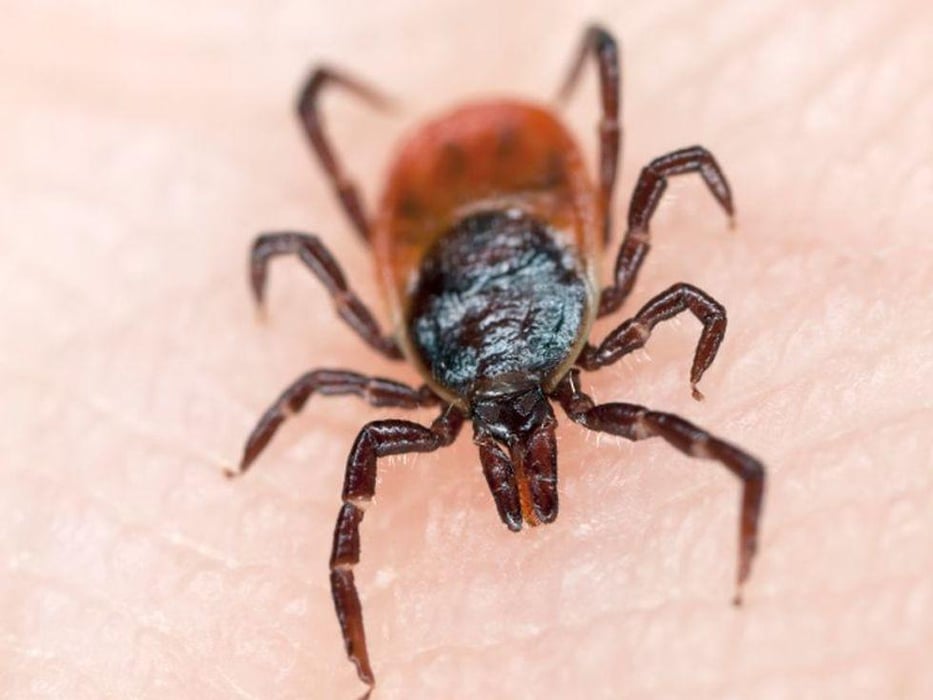Tick Talk: Know Your Risks This Summer

TUESDAY, June 20, 2023 (HealthDay News) -- Ticks can be a problem for people who love to spend the summer outdoors, especially in certain regions of the United States.
Ticks are responsible for the well-known Lyme disease and other tick-borne illnesses, said Dr. David Ingram, an infectious diseases physician and researcher at Penn State Health Medical Center.
He's also a father of young children who calls himself the tick police. Here, he shares some helpful information:
To pass the harmful bacteria that causes Lyme disease, a blacklegged tick must be attached to the victim for about 24 to 48 hours. For another tickborne disease called anaplasmosis, it’s around 24 to 36 hours. For babesiosis, it’s about 48 to 72 hours.
Anyone who knows they’ve had a tick attached for 36 hours or longer should see their doctor for a single dose of the antibiotic doxycycline, according to the U.S. Centers for Disease Control and Prevention. The medication needs to be taken within 72 hours of finding and removing the tick.
After removing a tick, you should also closely monitor the area for any rash and any other symptoms such as fever, body aches and fatigue.
Someone who experiences a nonspecific fever in areas where tick-borne disease is common and has been outdoors should see a doctor even if they didn’t see the tick, Ingram advised.
With Lyme disease, a classic symptom can be a bullseye rash, but some people don’t get the rash or may get multiple skin lesions or a solid red rash instead, Ingram said.
With other tick-borne diseases, like anaplasmosis or babesiosis, a rash is less likely.
Some patients with anaplasmosis have gastrointestinal symptoms, including nausea, vomiting, abdominal pain and decreased appetite.
To diagnose and treat a tick-borne illness, the doctor may ask about travel and outdoor activity, do a physical exam and order blood tests. The parasite that causes babesiosis infects red blood cells and can be diagnosed by examining them.
A 10-day course course of doxycycline is typically the treatment for some tickborne illnesses. For babesiosis, doctors instead prescribe atovaquone and azithromycin because this illness is caused by a parasite.
You can develop multiple tick-borne illnesses from one tick, so it’s possible you will need two types of treatment at once.
When outdoors, you can help prevent tickborne diseases by wearing light-colored clothes so it’s easier to spot ticks, Ingram suggested.
Limit exposed skin, especially if hiking in tall grass or in the woods. You can do this by tucking your long-sleeved shirt into your pants and tucking your pants into your socks.
Use an insect repellent containing DEET. You can also spray your clothes with the insecticide permethrin, Ingram said.
Shower as soon as possible after your outdoor adventure, carefully checking yourself for ticks, especially around your ears, under your arms, around your waist and behind your knees.
If you find a tick, use tweezers to gently grab it as close to the skin as possible and pull it straight out. Then clean the area with soap and water or an antiseptic.
If you see a tick on your clothes, wash them in hot water and dry on a high-heat setting. Or simply toss them in the dryer on high for 10 minutes.
More information
The U.S. Centers for Disease Control and Prevention has more on diseases transmitted by ticks.
SOURCE: Penn State Health, news release, June 15, 2023
Related Posts
Hospital Costs for Firearm Injuries Vary Widely by Region
WEDNESDAY, May 4, 2022 (HealthDay News) -- Hospital admissions and costs for...
Diagnostican COVID a más de 1 millón de niños de EE. UU. en una sola semana
MIÉRCOLES, 26 de enero de 2022 (HealthDay News) -- Más de 1 millón de niños...
160,000 lb of Skippy Peanut Butter Recalled Due to Metal Fragments
FRIDAY, April 1, 2022 (HealthDay News) -- Skippy Foods LLC has announced a...
Facebook se convirtió en una red de emergencia en los primeros días de la pandemia
LUNES, 4 de octubre de 2021 (HealthDay News) -- En una emergencia de salud, los...
